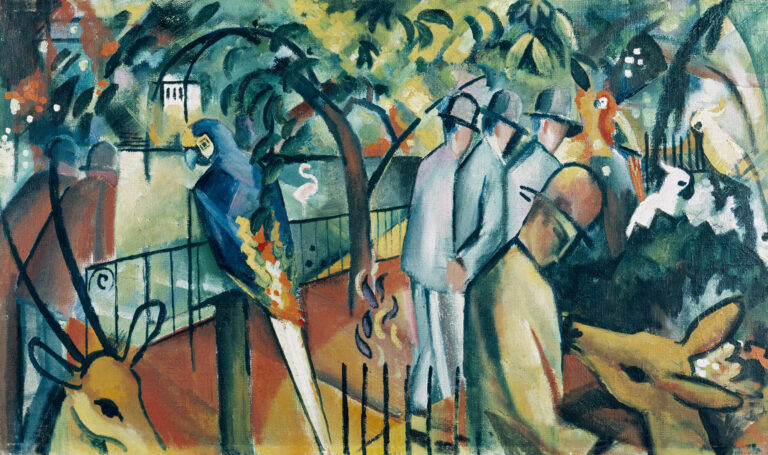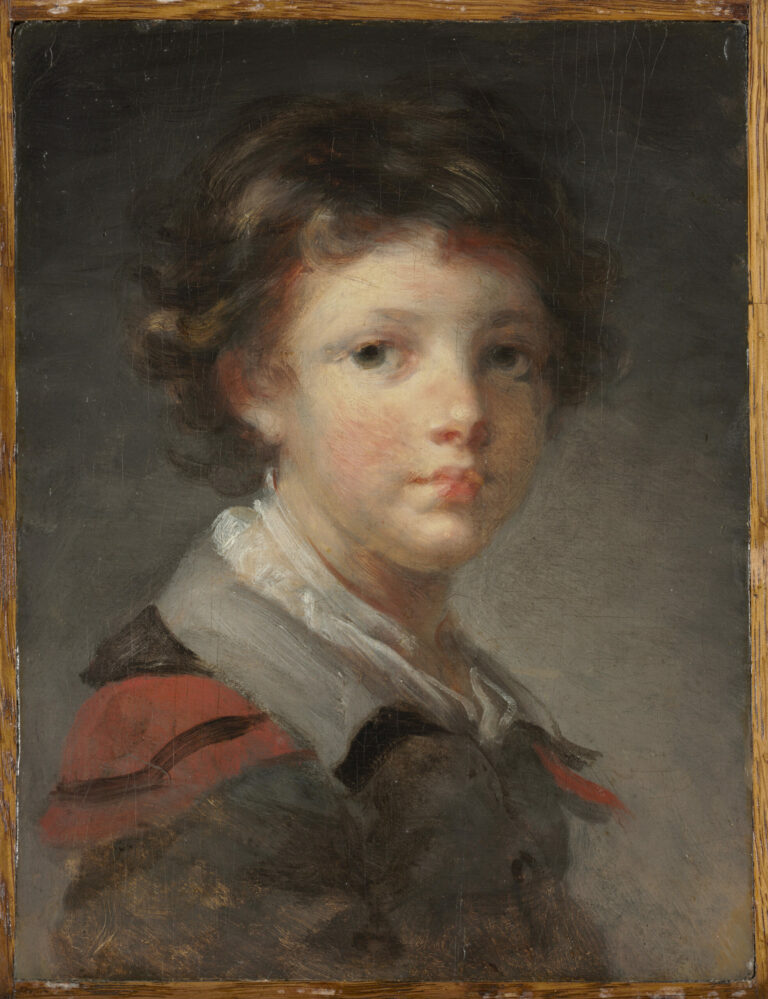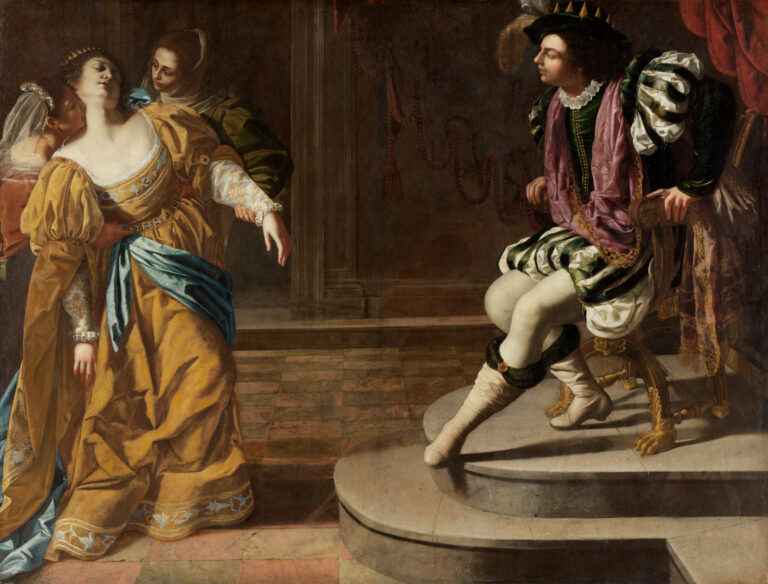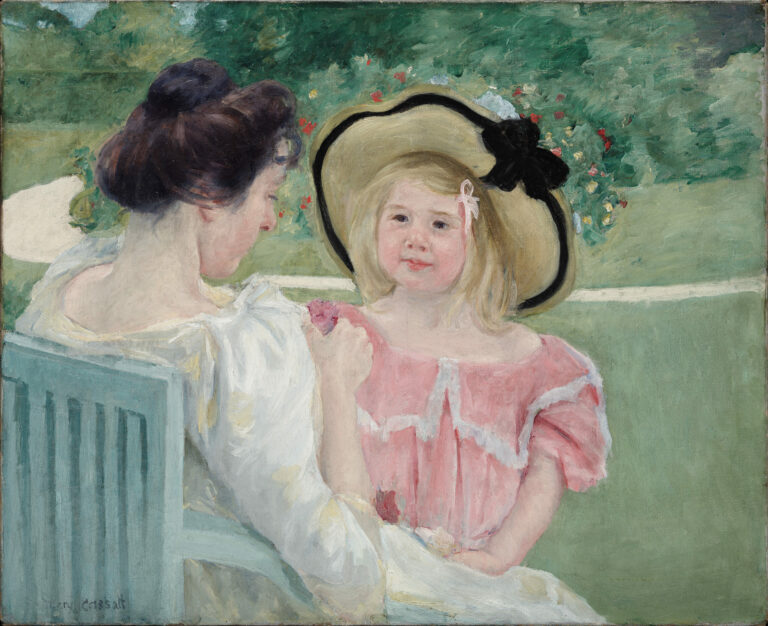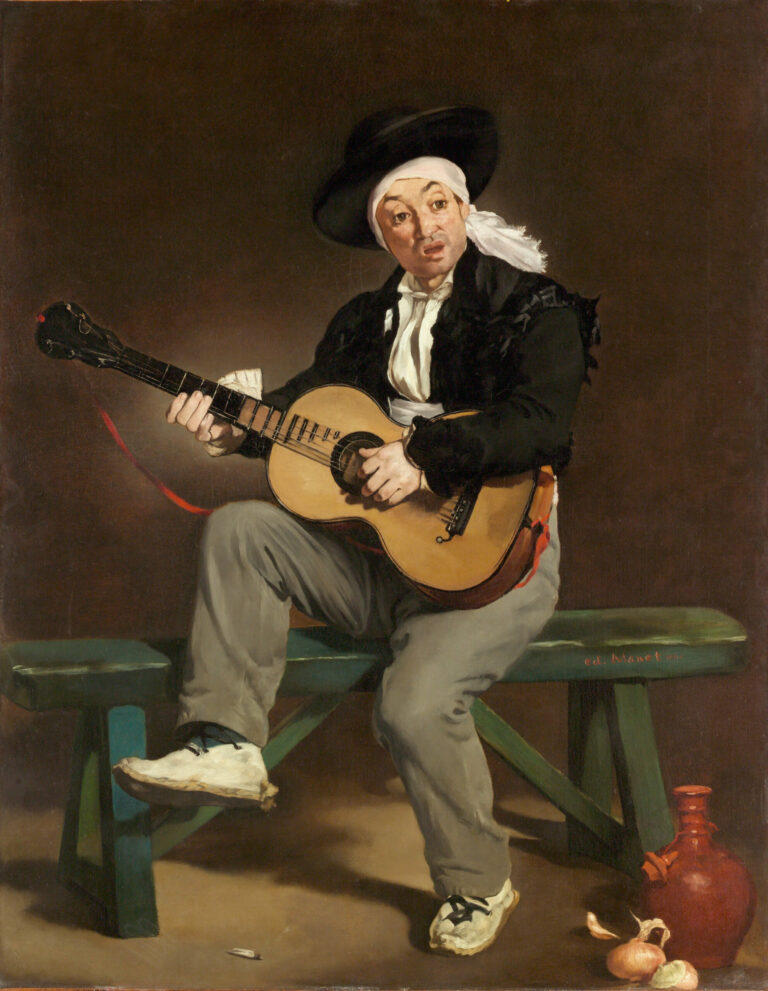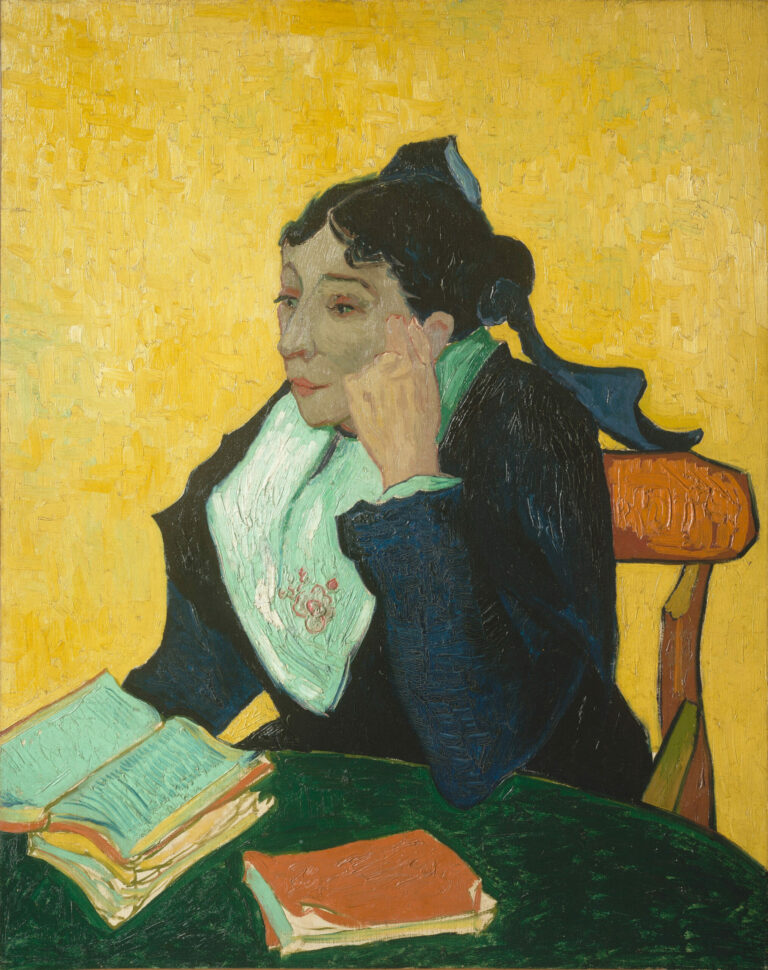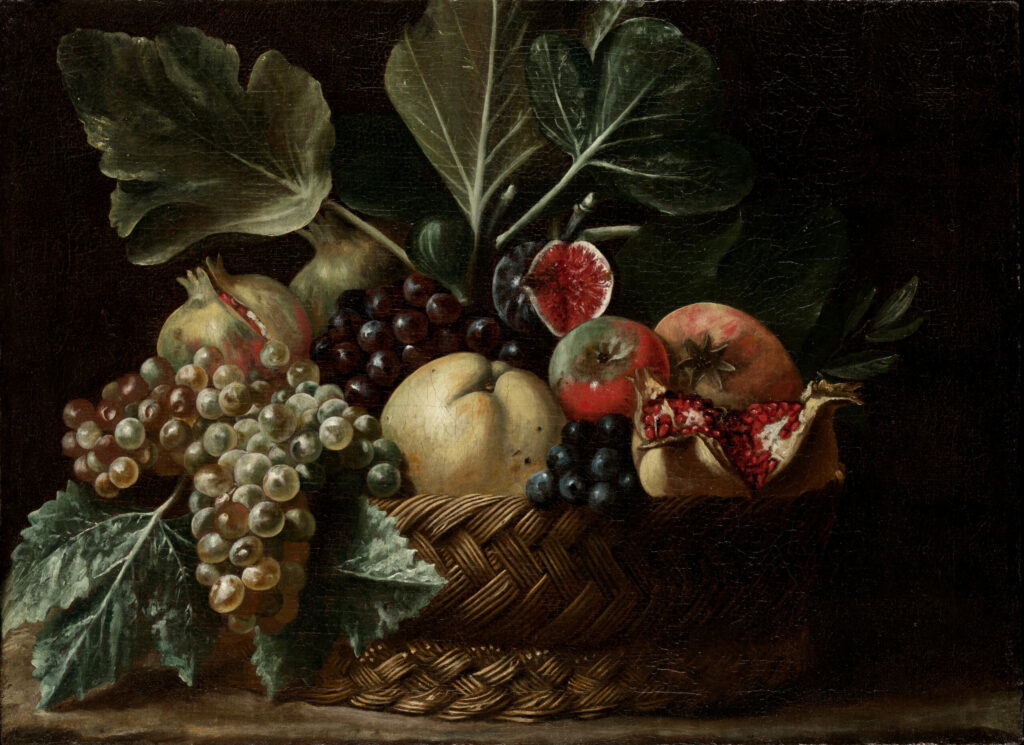
This still life illustrates Caravaggio’s influence on Italian art in the early 17th century.
Cavarozzi employs a composition of striking simplicity: fruits and foliage spill from a wicker basket against a neutral background, creating a trompe-l’œil effect. The direct observation of nature, advocated by the Crescenzi academy, is evident in every detail: translucent veins of vine leaves, grapes with pearlescent reflections, the rough texture of the quince marked by insect bites, and a split pomegranate revealing its ruby flesh. This naturalistic truth flourishes through the chiaroscuro inherited from the Lombard master, contrasting volumes sculpted by light with the mysterious depths of shadow. The artist transcends mere representation to achieve a poetry of the everyday, where the beauty of perishable fruits evokes the fragility of human existence according to the vanitas tradition.
Further Information
- Basket of Fruit, by Bartolomeo Cavarozzi or the Master of the Acquavella Still Life, circa 1620
- 49.5 × 67.9 cm (19 1/2 × 26 3/4 in.), oil on canvas
- The Metropolitan Museum of Art, Fifth Avenue, New York, not on view
- https://www.metmuseum.org/art/collection/search/816624
Bartolomeo Cavarozzi (1587-1625), Italian painter active between Rome and Spain, was one of the most talented followers of the Caravaggesque revolution. Trained in the circle of Giovanni Battista Crescenzi, an architect and enlightened patron, he assimilated the lessons of Lombard naturalism while developing a personal style of rare sensitivity. His stay in Madrid (1617-1619) enriched his palette and refined his technique. A recognized specialist in still life and religious painting, Cavarozzi successfully combined rigorous observation with poetic lyricism, contributing to the flourishing of this pictorial genre in Italy and Spain. His premature death cut short a promising career that had reconciled Caravaggesque fidelity with personal innovation.

